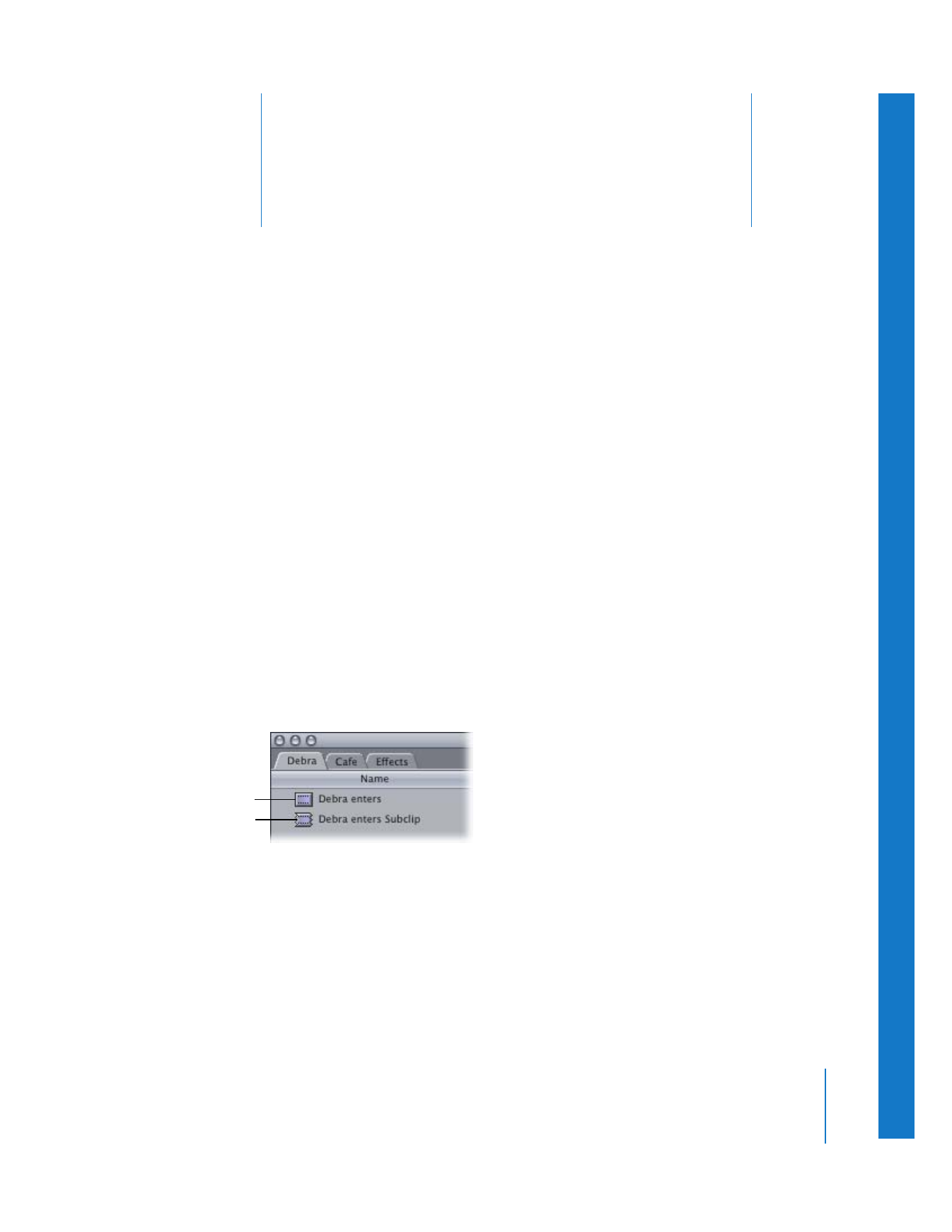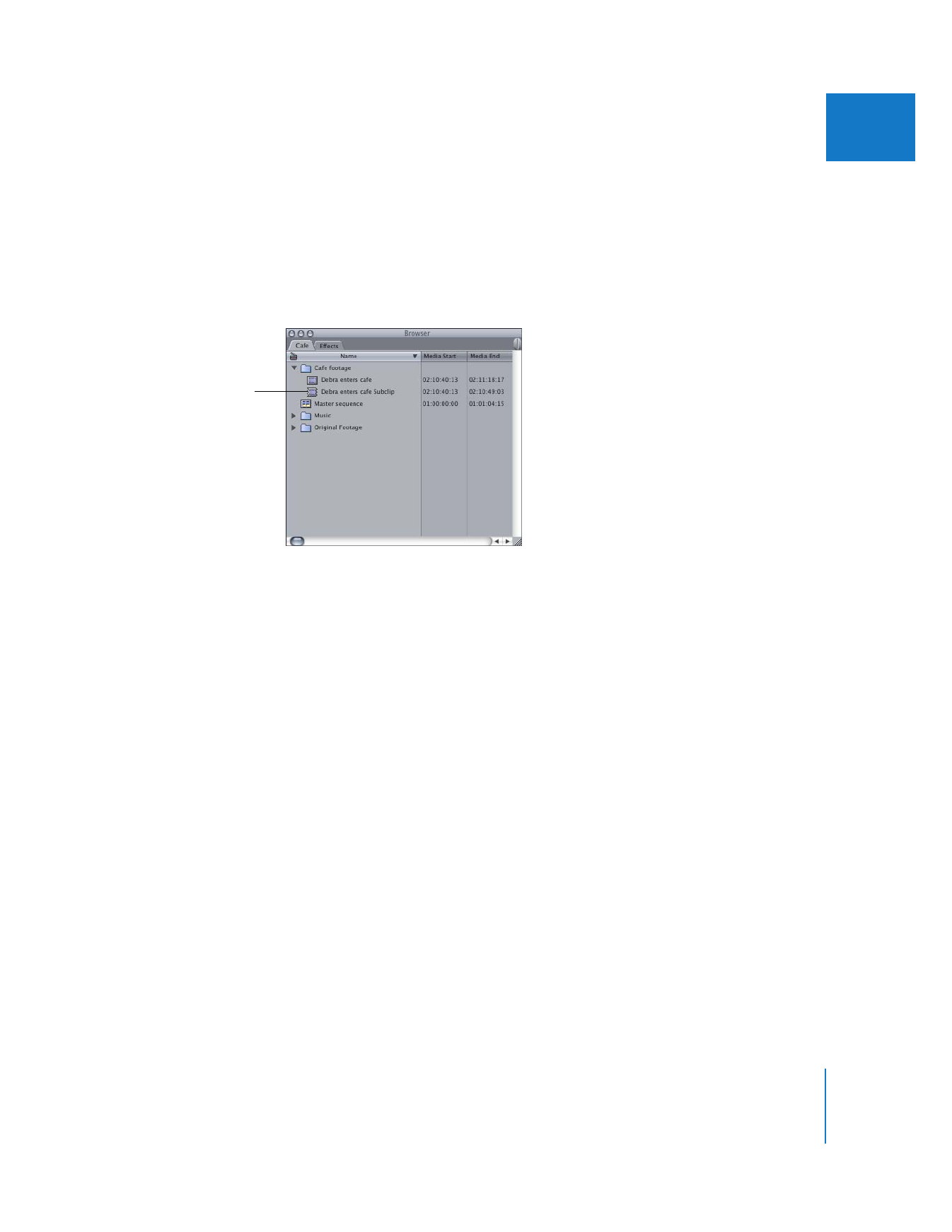
Learning About Subclips
(p. 35)
Â
Techniques for Breaking Large Clips into Subclips
(p. 39)
Â
Creating Independent Media Files from Subclips After Capturing
(p. 42)
Learning About Subclips
For organizational purposes, you can break up a single large clip into several subclips.
Subclips are defined by In and Out points or markers set in the original clip prior to the
creation of subclips. New subclips automatically become their own master clips, with
no affiliation to the clip from which they were created.
Subclips allow you to work more easily with lengthy media by breaking up a single clip
into many smaller pieces. For example, you can open a 20-minute clip comprising
15 different shots in the Viewer and divide it into 15 subclips, one for each shot.
Subclip
Clip

36
Part I
Organizing Footage and Preparing to Edit
Final Cut Pro places new subclips in the same Browser bin as the original clip they
came from, automatically appending the word “Subclip” to the name and numbering
each successive subclip you create from a particular clip. For example, if the original
clip is named “Debra enters cafe,” the first subclip is named “Debra enters cafe Subclip,”
the second is “Debra enters cafe Subclip 2,” and so on. When a new subclip is first
created, its name is highlighted and ready to be changed.
You can rename subclips, move them into different bins, and organize them in any way
you choose. After you’ve created your subclips, you can open them in the Viewer and
set new edit points, just as you can with any other clip. The original clip remains in the
Browser, but is completely independent of your subclips. Any changes you make to a
subclip are not applied to the original clip.
Numbered subclips are
placed in the same bin as
the master clip.

Chapter 2
Creating Subclips
37
I
To create a subclip:
1
Open a clip in the Viewer.
2
Set In and Out points.
3
Do one of the following:
 Choose Modify > Make Subclip.
 Press Command-U.
Sometimes, you may be looking for a particular frame in a subclip, and realize that
although those frames existed in the original clip, they were left out when you created
the subclip.
If you’ve opened a subclip to a certain frame in the Viewer, but you’d rather find the
same frame in the original media file (perhaps to pick an In or Out point outside the
subclip limits), you can easily swap the two in the Viewer.
To open the original media file from which a subclip came:
1
Open the subclip in the Viewer.
2
Find the frame you want to match.
3
Do one of the following:
 Choose View > Match Frame > Source File.
 Press Option-Command-F.
Final Cut Pro opens the subclip’s entire media file as an independent clip in the Viewer.
The playhead is located on the same frame in the new clip as in the original subclip. To
make the independent clip in the Viewer into a master clip for editing, drag the clip
from the Viewer to the Browser.
A new subclip appears in
the Browser below the
master clip, defined
by the In and Out
points you set.

38
Part I
Organizing Footage and Preparing to Edit